Bananas are a popular tropical fruit consumed worldwide, known not only for their delicious taste but also for their numerous health benefits. The diverse range of banana varieties, nutritional content, and culinary possibilities make them a valuable addition to a balanced diet. This comprehensive guide will provide an in-depth look into the world of bananas, from their origin and cultivation to the various health benefits they offer.
Banana Basics
Bananas are believed to have originated in Southeast Asia around 8,000 years ago and were primarily cultivated in the Philippines, Malaysia, and Indonesia. They slowly spread through the Indian subcontinent, Africa, and the Middle East before making their way to the Caribbean and South and Central America. The banana we commonly consume today, known as the Cavendish variety, was first cultivated in England in the 19th century. Today, bananas are cultivated in more than 135 countries across the world and are among the most widely consumed and popular fruits globally.
In terms of cultivation, bananas are typically grown in tropical and subtropical regions, where the climate is humid and warm. They require well-drained soil with adequate moisture to thrive. They are unique because, unlike many other fruits which grow on trees, bananas grow on herbaceous flowering plants that can reach up to 25 feet in height. The fruit itself grows in clusters called “hands,” which are attached to the main stalk of the plant. Each banana is referred to as a “finger.” Once harvested, it typically takes about 10 to 12 months for a new banana plant to produce fruit.
There are numerous types of bananas available, with over 1,000 different varieties classified into several groups based on their characteristics. They are generally divided into dessert bananas, which are sweet and eaten raw, and cooking bananas or plantains, which are starchier and typically cooked before consuming. The Cavendish variety mentioned earlier is the most common dessert banana worldwide, characterized by its yellow skin when ripe and sweet taste. Other notable dessert banana varieties include the Lady Finger, Red, and Blue Java, also known as the “ice cream banana” due to its unique taste and texture.
Apart from dessert bananas, the cooking bananas like plantains are also an essential part of many regional cuisines and provide significant nutrition. These bananas have a thicker skin and a more starchy, less sweet flavor when compared to dessert bananas. Plantains are usually consumed cooked, whether it be boiled, fried, or baked. Some popular cooking banana varieties include East African Highland bananas, commonly used for cooking in Uganda and East Africa, and Horn plantains, which are varieties of large, angular fruits.
Banana nutrition varies based on the type, with most dessert bananas being an excellent source of dietary fiber, vitamins C and B6, potassium, and antioxidants. They also contain natural sugars like glucose, fructose, and sucrose, which can provide a quick energy boost. Cooking bananas, on the other hand, are rich in starch and provide a good source of complex carbohydrates, making them a staple food in many tropical regions. Furthermore, bananas are a popular fruit known for their convenience, portability, and pleasant taste. Regardless of the type, bananas have been linked to various health benefits, such as promoting good digestive health, reducing inflammation, and supporting heart health.
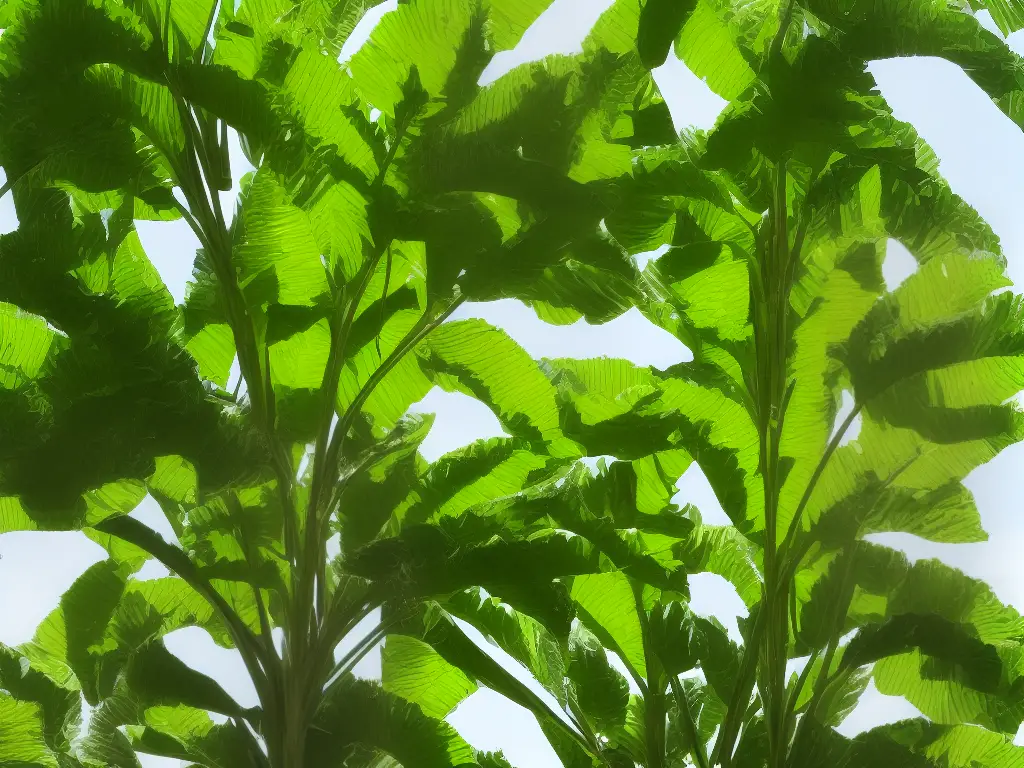
Nutritional Content
With their diverse types and nutritional qualities, bananas remain an important and versatile food for people worldwide. One of the essential nutrients found in bananas is vitamin C, which plays a crucial role in the body’s immune system by combating the effects of harmful free radicals. In addition, vitamin C is vital for synthesizing collagen, which helps maintain healthy skin and plays a role in wound healing. A medium-sized banana contains about 10% of the recommended daily intake of vitamin C. Bananas also contain minerals like potassium, magnesium, and iron, making them a valuable source of essential vitamins and minerals for overall health and wellbeing.
In addition to vitamin C, bananas are an excellent source of vitamin B6. A medium-sized banana provides about 20% of the recommended daily intake for this important micronutrient. Vitamin B6 plays a significant role in several bodily functions, such as brain development, the creation of neurotransmitters like serotonin and dopamine, and maintaining proper blood sugar levels. This makes vitamin B6 essential for overall brain health and emotional well-being.
Besides vitamins, bananas are also packed with essential minerals, including potassium and manganese. A medium-sized banana contains about 9% of the recommended daily potassium intake, which plays a crucial role in regulating fluid balance, maintaining proper nerve and muscle function, and controlling blood pressure. Potassium is essential for cardiovascular health and has been linked to a reduced risk of stroke. Manganese is another essential mineral found in bananas, and it is involved in several important bodily functions like bone formation, metabolism, and antioxidant regulation.
Bananas are also an excellent source of dietary fiber, which is a crucial element of a healthy diet. A medium-sized banana provides about 3 grams of fiber, which is about 10% of the recommended daily intake. Fiber plays a crucial role in maintaining proper digestive health, preventing constipation, and supporting regular bowel movements. Soluble fibers found in bananas, such as pectin, can also help to moderate blood sugar levels after eating and promote feelings of fullness, which may aid in weight management.
Bananas are an excellent source of nutrients, making them a convenient and nutritious choice for individuals who lead an active lifestyle or require an energy boost during the day. The primary types of carbohydrates found in bananas are simple sugars like glucose, fructose, and sucrose, as well as starch. When a banana is unripe, it contains more starch, but as it ripens, the starch is converted into sugars, which makes the banana sweeter. These carbohydrates are easily utilized by the body to provide a quick and convenient source of energy.
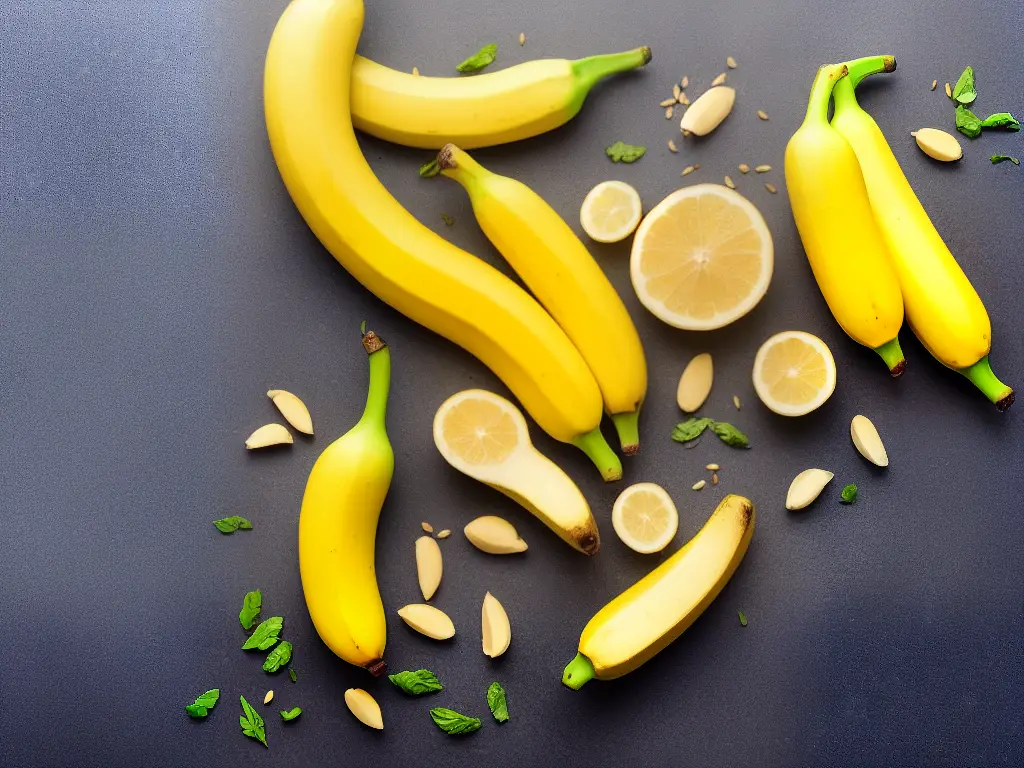
Health Benefits
In addition to their energy-providing carbohydrates, bananas are also rich in essential vitamins and minerals which play a significant role in maintaining a healthy lifestyle. One of the most notable nutrients found in bananas is potassium. Potassium is critical for maintaining proper muscle function and regulating blood pressure, and consuming ample potassium can help protect against muscle cramps, as well as conditions like hypertension and stroke. A medium-sized banana contains approximately 420-450 mg of potassium, making it an ideal food for promoting heart health.
In addition to potassium, bananas are also a natural source of dietary fiber, which contributes to overall digestive health. A medium-sized banana contains about 3 grams of dietary fiber, aiding in healthy digestion and bowel function. Moreover, bananas are ideal for treating gastrointestinal issues like constipation and diarrhea due to their pectin content. Pectin acts as a natural binding agent, assisting in the normalization of bowel movements. Consuming bananas can help alleviate digestive distress and promote a healthy gut.
Another significant health benefit of bananas is their ability to aid in weight management. Bananas are a naturally low-calorie food, with a medium-sized banana containing approximately 90-105 calories. They are also rich in resistant starch, a type of carbohydrate that resists digestion and leads to a longer-lasting feeling of fullness. This makes bananas an excellent snack option for individuals looking to curb appetite and manage their weight. The natural sweetness of bananas can also help satisfy sugar cravings without resorting to unhealthy snack options.
Moreover, bananas contain several essential vitamins and minerals that support overall health. They are rich in Vitamin C, which is crucial for boosting immune function and promoting healthy skin. A medium-sized banana contains about 10% of the daily recommended intake of Vitamin C. Additionally, bananas contain Vitamin B6, which plays a critical role in brain function and helps the body convert food into energy.
Bananas are a nutrient-rich fruit, offering numerous health benefits. They have a low to medium glycemic index (GI), allowing for a slower release of sugar into the bloodstream. This helps in maintaining energy levels and controlling blood sugar spikes. In addition, bananas are a good source of antioxidants, such as dopamine and catechins, which can protect against cellular damage caused by free radicals and potentially reduce the risk of diseases such as cancer and heart disease. Including bananas in your diet can contribute to overall physical well-being and balanced nutrition.

Ripening Process
The ripening process of bananas has a significant impact on their nutrient content, which in turn influences their overall health advantages. This process consists of various stages, marked by changes in color, texture, and nutritional properties. Being aware of these stages can help individuals make informed choices about when to consume bananas, ensuring that they can fully benefit from their nutritional value and various health benefits.
The first stage of banana ripening is when the fruit is green and considered unripe. At this point, bananas are high in starch and low in sugar content, making them harder to digest. This high starch content, particularly resistant starch, has been linked to several health benefits such as improved gut health and reduced insulin resistance. However, green bananas may lead to gas and bloating in some individuals due to their high fiber content.
As the banana transitions from the green to the yellow stage, the fruit becomes slightly sweeter as the starch content begins to break down into simpler sugars. This makes the banana easier to digest while still retaining some of the resistant starch found in the green phase. During this stage, bananas also start to develop antioxidants, which can help protect the body from free radicals and reduce the risk of chronic diseases.
The third stage of ripening is when the banana’s skin turns fully yellow, signaling the peak of sugar content and a decrease in resistant starch. This stage of ripening is also marked by an increase in vitamins and minerals such as vitamin C, vitamin B6, and potassium. As the banana further ripens to feature brown spots, it continues to lose its starch content while the sugar content remains constant. At this stage, the banana is at its sweetest and provides a quick and natural energy source for the body.
The final stage in the banana ripening process is when the fruit becomes overripe with large brown patches or an entirely brown skin. Despite its unappealing appearance, overripe bananas contain high levels of antioxidants, making them excellent for fighting off infections and improving overall immune health. Moreover, studies have found that the TNF (Tumor Necrosis Factor) in overripe bananas can help combat abnormal cells in the body, potentially reducing the risk of certain diseases such as cancer.
Bananas are a popular fruit consumed worldwide, offering numerous health benefits due to their rich nutritional content. Throughout the ripening process, bananas undergo various changes in their nutritional content, making each stage unique in terms of health advantages. By understanding this progression and incorporating bananas with different ripeness levels into one’s diet, individuals can maximize the fruit’s nutritional benefits and contribute positively to their overall health and well-being.
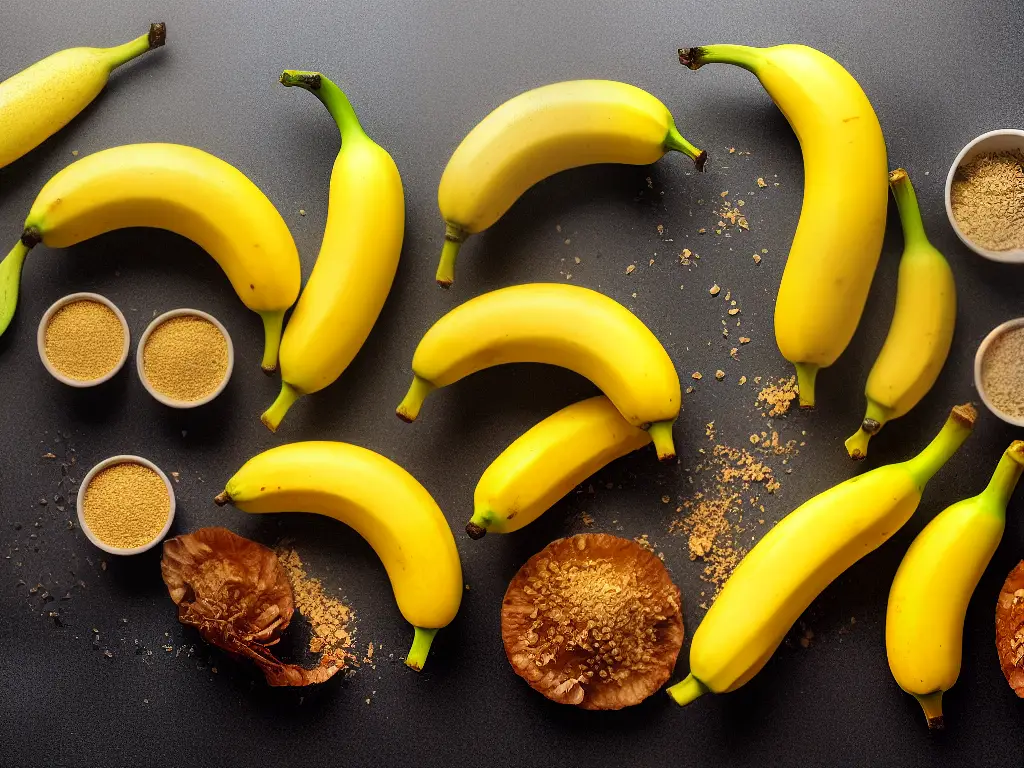
Banana Allergy and Intolerances
However, it is worth noting that banana allergies and intolerances, though uncommon, can occur in some individuals. A banana allergy is caused by an immune system reaction to proteins found in bananas, while an intolerance is typically due to digestive system issues related to the consumption of bananas. Both conditions can present with similar symptoms, but their underlying causes and treatments may differ. As bananas are a good source of nutrients like potassium, vitamins, and fiber, it is essential to understand the implications of a banana allergy or intolerance in one’s overall nutrition and adapt the diet accordingly if necessary.
The symptoms of a banana allergy can range from mild to severe, depending on the individual’s immune system response. Some common symptoms include itching or swelling of the mouth, tongue, or throat, hives, or rash on the skin, and digestive issues like stomach cramps, vomiting, or diarrhea. In more severe cases, a banana allergy can lead to anaphylaxis, a potentially life-threatening reaction that requires immediate medical attention. Signs of anaphylaxis can include shortness of breath, rapid or weak pulse, and a drop in blood pressure.
On the other hand, banana intolerance generally leads to less severe symptoms compared to an allergy. Some common symptoms of a banana intolerance include gas, bloating, stomach pain, and diarrhea. These symptoms usually occur several hours after consuming bananas and are often related to the body’s inability to digest the carbohydrates present in bananas, such as fructose and sorbitol. Additionally, people with an intolerance to bananas may also experience discomfort after consuming other fruits or foods high in fructose.
In some cases, people who are allergic to bananas might also react to other foods or substances. This is known as cross-reactivity and is usually observed between bananas and natural rubber latex allergy, as both contain similar proteins. Individuals with a latex allergy may also react to other fruits like avocados, kiwis, and chestnuts. Additionally, banana allergies are also associated with something called pollen-food syndrome, where people who are allergic to certain pollen types, such as birch or ragweed pollen, may also develop an allergic reaction to bananas.
Bananas are not only a tasty and convenient snack, but also a highly versatile fruit that can be incorporated into an array of delicious and nutritious recipes. They are rich in various nutrients, such as fiber, antioxidants, and potassium, which help promote digestion and heart health. One great way to include bananas in your diet is by creating smoothies.

Cooking and Recipes
However, for those with banana allergies or intolerances, managing their condition involves avoiding or limiting the consumption of bananas in their diet. Individuals with a banana allergy must strictly avoid the fruit and its byproducts to prevent a potentially severe allergic reaction. On the other hand, those with banana intolerances may consider consuming smaller amounts to minimize digestive discomfort. In either case, it is essential to consult with a healthcare professional or dietitian to ensure proper nutrition is maintained. They can provide suitable alternative food sources to help maintain a balanced and healthy diet in the absence of bananas.
For a potassium-packed breakfast option, try blending a yellow or even a slightly green banana with Greek yogurt, a handful of spinach, a teaspoon of chia seeds, and some almond milk. The result is a delicious and nutrient-dense smoothie to kick-start your day.
Another wholesome recipe that highlights the natural sweetness of bananas is banana oat pancakes. Unlike conventional pancakes, this healthy alternative is flourless and requires just two ingredients: ripe bananas and rolled oats. To make, simply blend one ripe banana with ½ cup of rolled oats until a thick batter forms. Add a dash of cinnamon for extra flavor, and cook on a non-stick pan for a hearty and nutritious breakfast. These pancakes are a rich source of fiber and offer a guilt-free way to enjoy a classic morning dish.
Bananas can also act as a wholesome sweetener in baked goods, allowing for a reduction in the use of refined sugars. A popular and simple recipe to try is banana bread. By combining mashed ripe bananas with whole wheat flour, a healthy fat source like avocado oil, a small amount of honey or maple syrup, and your choice of mix-ins like nuts or dried fruits, you can create a scrumptious and nutrient-rich treat. This recipe not only curbs sugar cravings but also provides a nourishing source of energy throughout the day.
For an even healthier spin on baked desserts, consider creating a batch of banana-based cookies. With no need for added sugars, these cookies are made by combining mashed bananas with rolled oats, applesauce, vanilla extract, and your choice of additional ingredients, such as coconut flakes, raisins, or nuts. Simply spoon the mixture onto a lined baking sheet and bake in the oven. These banana-oat cookies make for a wholesome snack, packed with beneficial nutrients from both the bananas and oats.
Bananas are not only delicious and versatile in many culinary applications, but they also provide significant nutritional benefits. They can be used beyond typical sweet treats, as they play a role in savory dishes, particularly in tropical and Caribbean cuisines. By using bananas as a base for sauces or adding them to dishes like curry, you can add a touch of sweetness and depth to your meal. For example, blend ripe bananas with curry powder, coconut milk, and tomatoes to create a unique sauce for vegetables, chickpeas, or your choice of protein. This dish not only offers the nutritional benefits of bananas, but it also introduces your palate to exciting new flavor combinations.
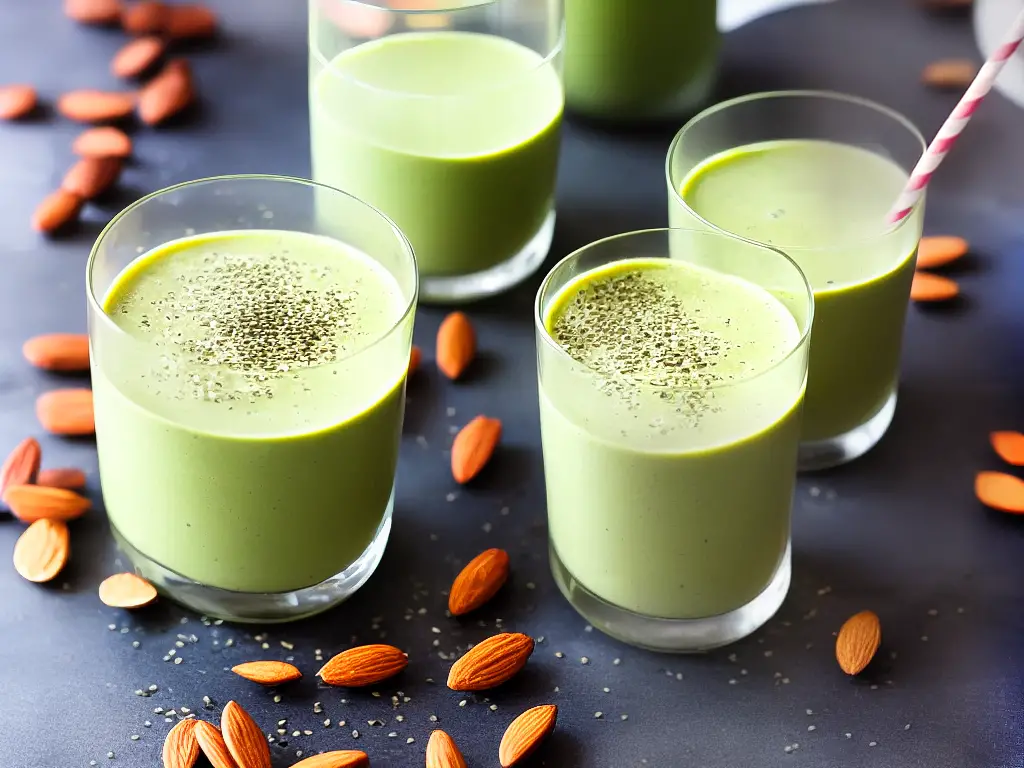
Storage and Preservation
As you incorporate bananas into your culinary endeavors, it’s important to store and preserve them properly to ensure they stay nutritious and prevent food waste. Since bananas have a relatively short shelf life and can deteriorate quickly, knowing the appropriate storage methods is essential to enjoy their numerous health benefits and fantastic flavors in your cooking.
When storing bananas, it is important to consider factors such as temperature, ethylene gas, and ripeness to ensure you are getting the most out of your favorite yellow fruit.
Temperature
Temperature plays a significant role in the lifespan of a banana. Ideally, bananas should be stored at room temperature, around 18-20 degrees Celsius (64-68 degrees Fahrenheit). This will allow the fruit to ripen slowly and evenly. It is not recommended to store bananas in the refrigerator, as the chilly environment can cause the cellular structure of the fruit to break down, and the banana can become mushy and of lower nutritional content. However, if your bananas are already at the desired ripeness level, you may place them in the fridge to slow down the ripening process (although it might make the skin brown, the flesh remains unaltered).
Ethylene Gas
Ethylene gas is a natural plant hormone that regulates fruit ripening. Bananas naturally produce ethylene gas, and as they ripen, they release more of it. By controlling the exposure to ethylene gas, you can manage the ripening process more effectively. To slow down the ripening process, you can place the bananas in a perforated plastic bag. This will minimize the concentration of ethylene gas around the fruit. Additionally, separating bananas from other fruits and vegetables can help prevent cross-contamination, as some produce may release ethylene gas as well.
Preserving Bananas
To fully appreciate the nutritional benefits and versatility of bananas, it’s essential to know how to preserve them for a longer period. Freezing bananas is one of the most common methods; simply peel, cut into smaller pieces, and store in a sealed container or zipper bag. This not only locks in the nutrients but also provides you with a convenient ingredient for smoothies, baking, or making nice cream. Keep in mind that thawed bananas can be a bit mushy, so it’s best to use them in recipes that don’t require a firm texture.
Another excellent preservation technique is dehydrating bananas, which lets you create banana chips as a dried, naturally sweet snack. By removing moisture, you prevent bacteria and mold growth, extending their shelf life significantly. Dehydrated bananas still contain most of their nutrients, and when stored in a cool, dark place in an airtight container, they can last for months. Plus, drying bananas can concentrate their natural sugars, making them a healthier alternative to other high-sugar snacks.
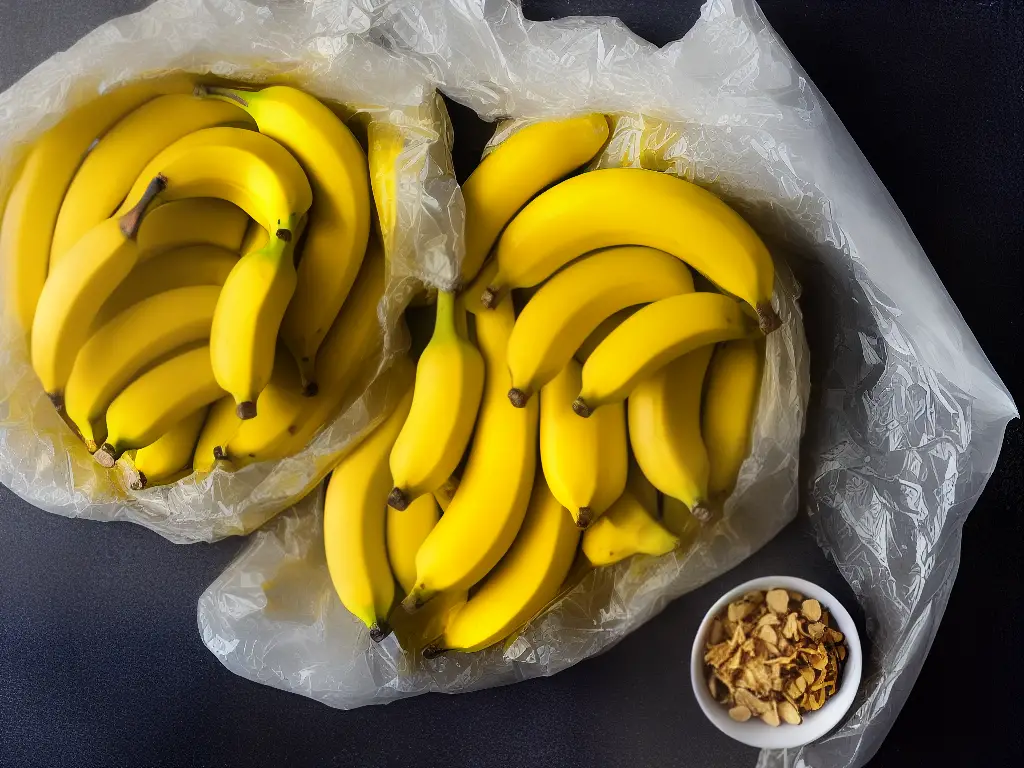
Environmental Impact
In addition to understanding banana nutrition, it’s vital to be aware of the environmental impacts associated with their cultivation. A key concern is the high water usage required for banana production, as about 20 liters of water are needed to produce just one banana. This places a considerable strain on water resources, particularly in regions where water scarcity is a significant problem. By preserving bananas and being mindful of their environmental footprint, you can make better choices while enjoying the nutritional benefits they offer.
Furthermore, the extensive use of agrochemicals, including synthetic fertilizers, pesticides, and fungicides, contributes to environmental degradation in various ways. Runoff from these chemicals can result in waterway pollution and have devastating effects on aquatic life and ecosystems. The excessive use of agrochemicals can also lead to chemical residues on bananas which could pose risks to human health and the nutritional aspects of the fruit.
The banana industry is also heavily reliant on monoculture farming practices. This results in decreased crop diversity, increased susceptibility to pests and diseases, and higher vulnerability to climate change impacts. A major example is the widespread prevalence of Panama disease, a fungal infection that devastates banana plantations and has spurred large-scale conventional farmers to clear even more land for cultivation, leading to widespread deforestation. Deforestation, in turn, exacerbates climate change, biodiversity loss, and soil erosion issues.
To address these environmental challenges, sustainable and ethical practices are essential. More agricultural organizations and farmers are adopting sustainable practices such as agroforestry – where bananas are grown alongside other plants and trees in a more biodiverse setting that mimics natural ecosystems. This can not only promote ecological balance but also enhance the natural resistance of bananas against diseases and pests, reducing the need for harmful agrochemicals.
One promising initiative is the Fair Trade movement, which promotes socially and environmentally responsible practices in the banana industry. Fair Trade certified farms comply with environmental standards that aim to reduce the use of harmful chemicals, promote water conservation, and protect ecosystems and biodiversity. By supporting bananas produced through sustainable and ethical means, consumers are given the option to make a positive environmental impact while still enjoying the nutritional benefits of this popular fruit.
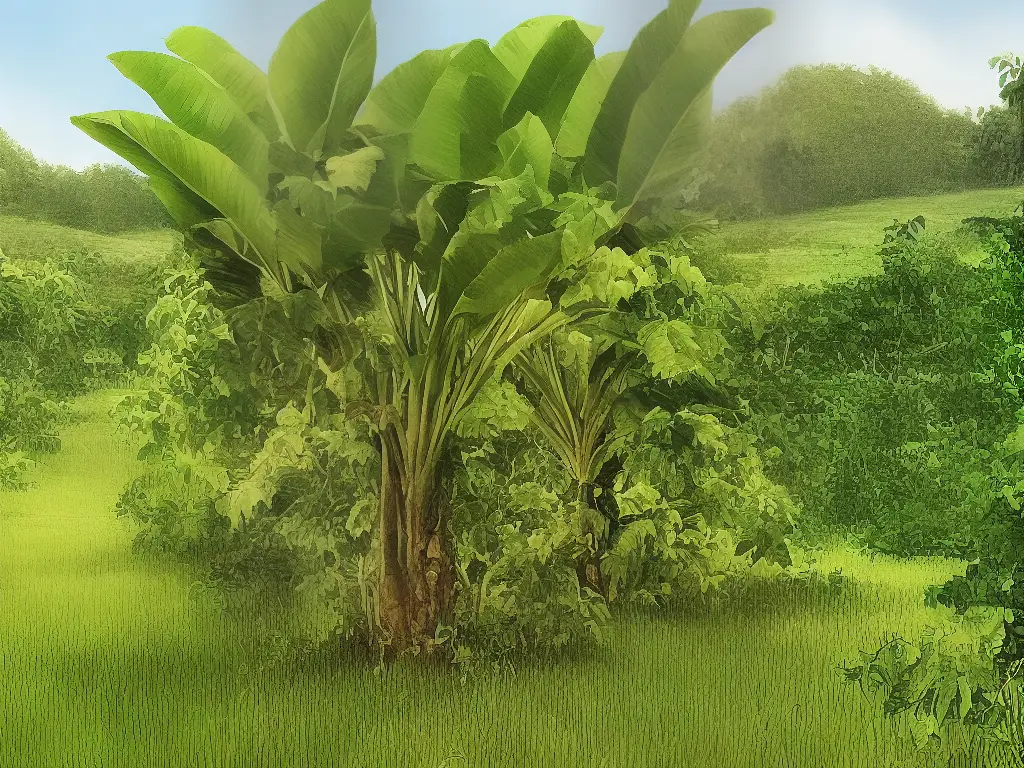
Overall, bananas are a versatile fruit with an array of nutritional benefits and environmental considerations. Through the exploration of their origins, nutritional content, health benefits, and proper storage techniques, individuals can make informed decisions about incorporating bananas into their daily diet. By understanding the environmental impact and sustainability practices related to banana cultivation, consumers can also make responsible choices that support ethical and sustainable farming practices.